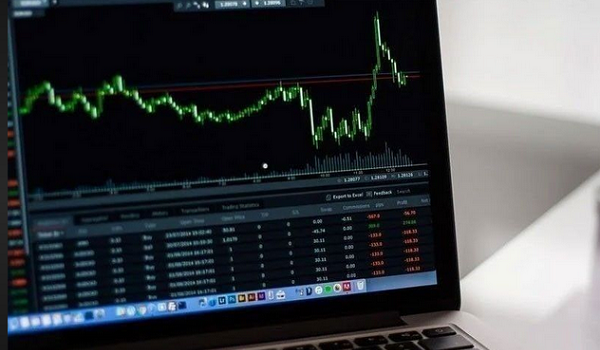Global markets plunge with concern over U.S. economy heading for recession, tech pullback
Global stock markets plummeted on Monday as worries mounted that the U.S. economy could be headed for a recession and investors dumped technology stocks and other risky assets.
The S&P 500 fell 3 per cent while the technology-heavy Nasdaq Composite dropped 3.4 per cent – the biggest one-day declines since September, 2022. Japan’s main stock index fell 12.4 per cent, the largest decline since Black Monday in 1987. Canadian markets were closed for the August long weekend.
The market rout, which saw the Dow Jones index tumble more than 1,000 points, or 2.6 per cent, reflects a sudden shift in narrative about the American economy. After weaker-than-expected U.S. employment data last week, investors have become concerned that the Federal Reserve has miscalculated and held interest rates too high for too long, jeopardizing a soft landing for the world’s largest economy.
These fears about the economy are blending with waning enthusiasm for large-cap technology stocks, which powered much of the growth in U.S. equity markets this year based on excitement about artificial intelligence. Meanwhile, in Japan, a sharp rise in the Yen in recent weeks has dampened the prospects for Japanese exporters and forced global traders to unwind positions that were based on a weak Japanese exchange rate.
The sell-off in stocks, which started with a bang on Monday morning then moderated somewhat throughout the day, was accompanied by wild swings in bond markets, as traders reassessed their outlook for U.S. monetary policy in real time. The yields on two-year Treasury bonds fell as much as 20 basis points before recovering that ground by the end of the day. (A basis-point is 1/100th of a percentage point).
A drop in stock prices does not, by itself, pose major risk to the real economy. However, extreme market volatility can tighten lending conditions and a fall in asset prices can weigh on consumer confidence.
“The key risk to our view is that the disorderly market reaction itself, if sustained, will feed through to a higher chance of recession,” Stephen Brown, deputy chief North America economist at Capital Economics, wrote in a note to clients, which put the odds of a “hard landing” for the U.S. economy at 27 per cent.
“That could be because financial firms get into serious trouble due to the sharp market moves, or because firms respond to the tightening of financial conditions by cutting back on investment and headcount.”
The Bank of Canada is ahead of the Fed on monetary policy easing, having delivered two rate cuts so far this summer in response to falling inflation, tepid economic growth and rising unemployment. Governor Tiff Macklem said at the latest rate announcement that the central bank was putting more emphasis on downside risks to economic growth, instead of just focusing on the risk that inflation could rebound.
The sell-off began on Friday after the publication of the latest U.S. employment data, which showed fewer jobs were created in July than expected, while the unemployment rate rose to 4.3 per cent, the highest level in three years. This came only two days after the Federal Reserve opted to keep its benchmark interest rate steady at a two-decade high of 5.25 per cent to 5.5 per cent.
One bad jobs number doesn’t mean the U.S. is in a recession. Indeed, a range of other economic indicators suggest the American economy remains surprisingly robust despite highly restrictive interest rates. A gauge of the health of the U.S. service sector, published Monday, actually showed a rebound in July.
Still, the rise in unemployment breached something called the Sahm Rule, named after former Fed economist Claudia Sahm, which is seen by many as a reliable predictor of recessions. And it caused investors to second-guess their expectations of a soft landing, where inflation falls and interest rates decline in an orderly manner, without the economy cratering.
Investors now think the Fed will need to cut interest rates fast in the coming months to stimulate the economy and avoid a hard landing.
Financial markets are pricing in between 100 and 125 basis points of rate cuts before the end of the year. With only three Fed meetings left, that means markets expect policy makers to deliver oversized cuts. There were even suggestions from some analysts on Monday that the Fed should cut rates before the next meeting in September.
“The Fed could ride in on a white horse to save the day with a big rate cut, but the case for an intermeeting cut seems flimsy,” said Brian Jacobsen, chief economist at Annex Wealth Management. “Those are usually reserved for emergencies, like COVID, and an unemployment rate of 4.3 per cent doesn’t really seem like an emergency.”
Central banks around the world are walking a tightrope. Inflation has come down considerably, and most economies have avoided the recessions that economists were predicting a year ago. The concern now is that many central bankers have been too slow to begin bringing interest rates back to a more normal level, making a downturn much more likely.
Analysts at Goldman Sachs raised their forecast for a U.S. recession over the next 12 months, putting the probability at around 25 per cent, up from 15 per cent.
The market slump on Friday and Monday still leaves U.S. stock indices up considerably this year. While the Nasdaq Composite is down 13 per cent and the S&P 500 is off 8.5 per cent since peaking in July, both are still up nearly 10 per cent since the start of the year.
Some of Wall Street’s recent declines may also simply be air coming out of a stock market that romped to dozens of historic highs this year, in part on a frenzy around artificial-intelligence technology and hopes for coming cuts to interest rates. Critics have been saying for a while that the stock market looked expensive after prices rose faster than corporate profits.
“Markets tend to move higher like they’re climbing stairs, and they go down like they’re falling out a window,” according to JJ Kinahan, CEO of IG North America. He said much of the recent sell-off was due to subsiding euphoria around AI and “a market that was ahead of itself.”
The stock price for Nvidia Corp., the chipmaker most associated with the AI boom, fell as much as 12 per cent on Monday, and finished the day down 6.3 per cent. Alphabet Inc. stock was down 4.6 per cent while Apple Inc. stock fell 4.8 per cent.
Apple may also have been hit by the disclosure over the weekend that Warren Buffett’s Berkshire Hathaway had halved its ownership stake in the company.
The biggest fall in stock prices happened in Japan, where several macroeconomic and technical factors combined to create a massive pullback by investors.
The Bank of Japan raised interest rates last week, putting additional upward pressure on the Yen, which has already appreciated considerably over the past month.
The Yen’s appreciation has prompted a messy unwinding of a popular strategy called the “carry trade,” which involves borrowing money at low interest rates in Japan and investing in higher-yielding assets in other countries. It’s also hitting Japanese stock prices, as a rise in the Yen compared with other currencies tends to hurt the profits of Japanese exporters.
Other markets sold off as well on Monday. South Korea’s benchmark index declined 8.8 per cent, Britain’s FTSE 100 fell 2 per cent and the S&P Euro 350 was down 2.12 per cent.
This article was first reported by AP













